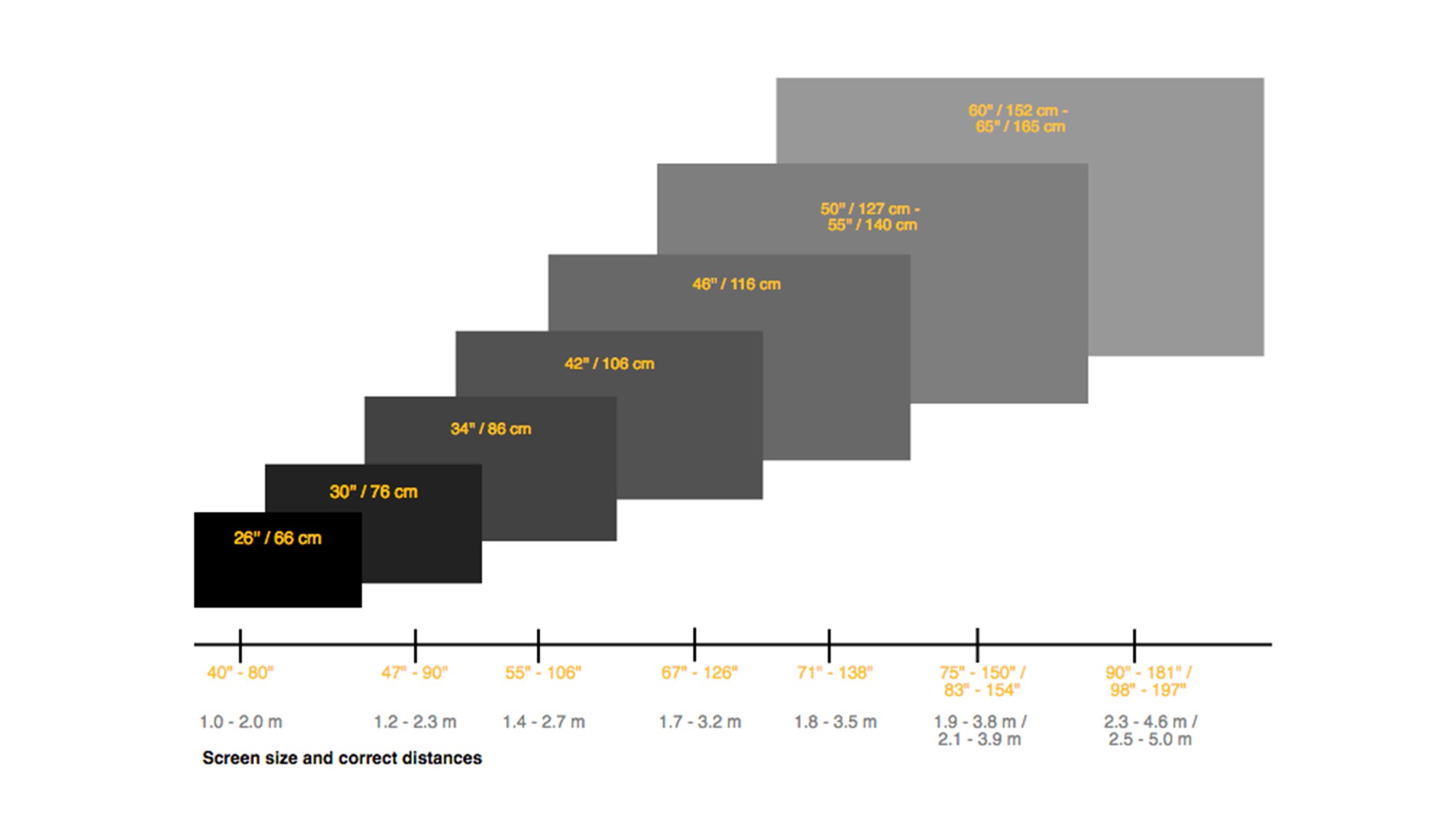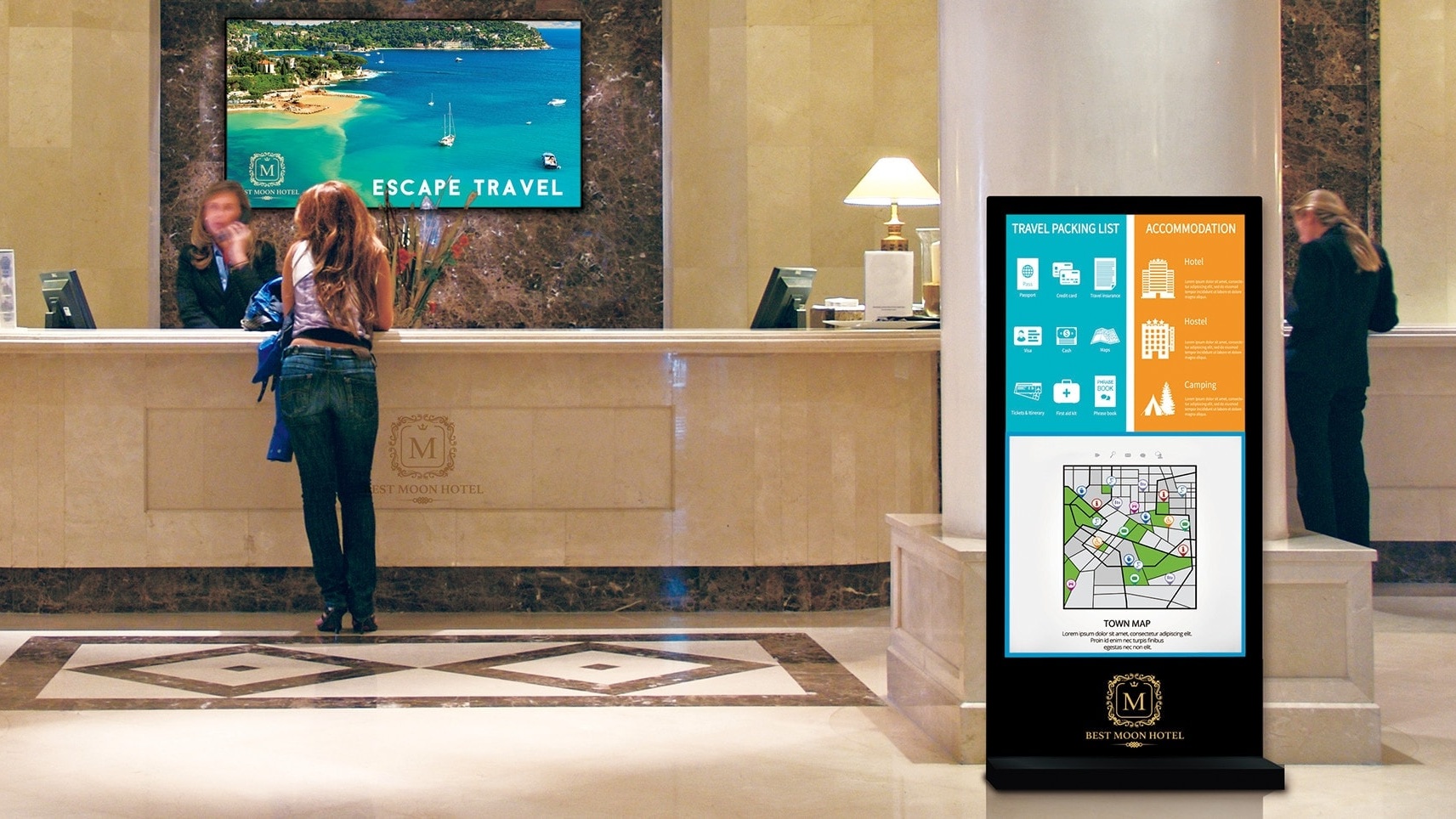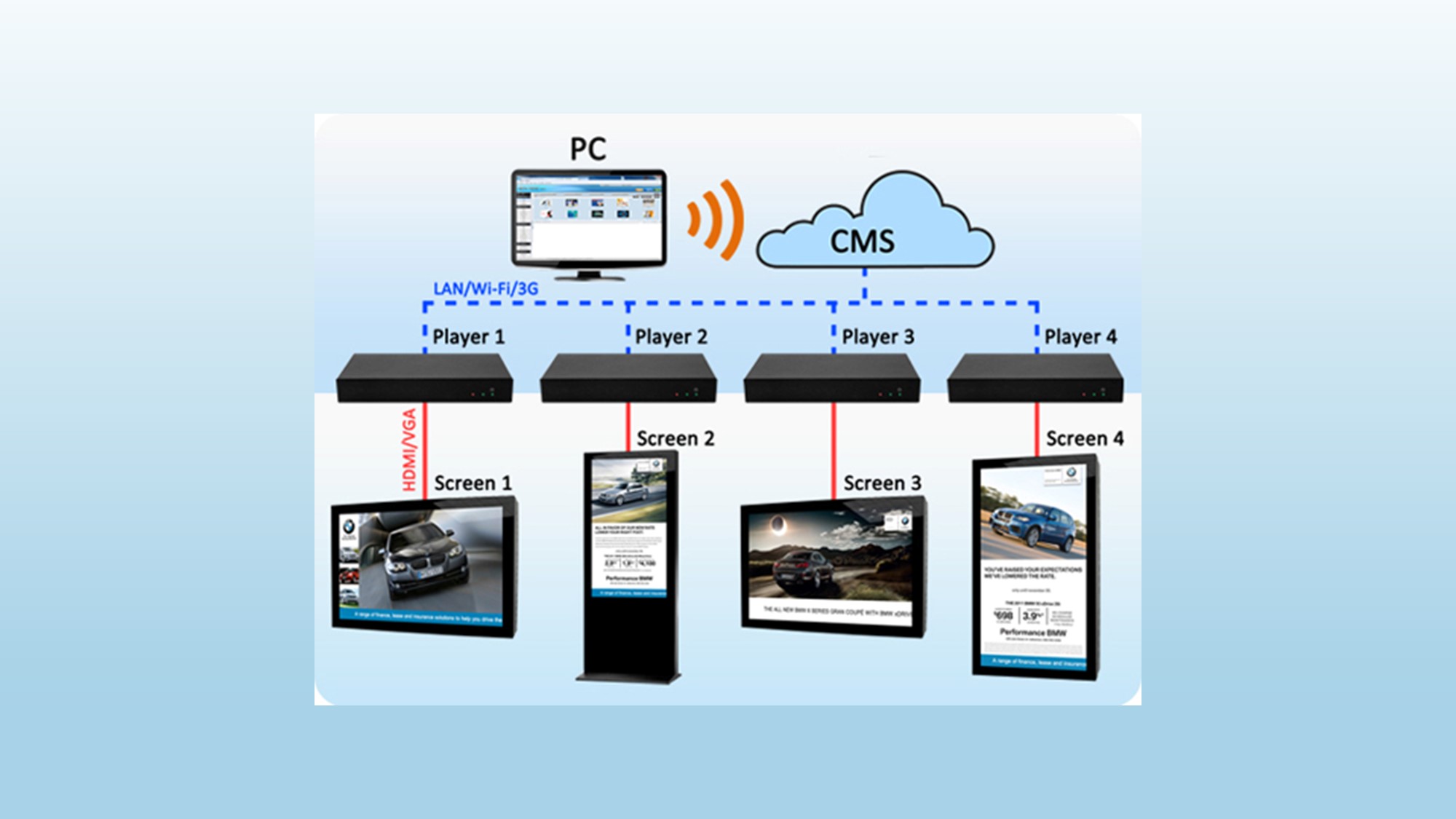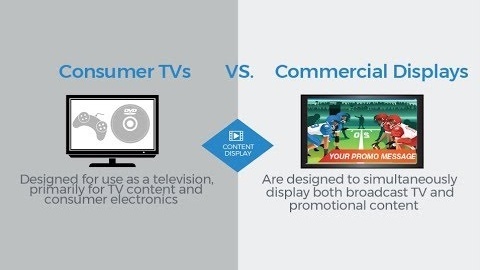How to Choose the Right Digital Signage Screen
Digital Signage Screens – How to Choose the Right Display for Your Needs.
When it comes to choosing the right digital signage hardware, there’s more to it than what meets the eye (no pun intended). This is especially true when it comes to picking the right screen. Why? Well, it most certainly isn’t a one-size-fits-all solution.
Every business is different, with different goals in mind that they want to achieve with their digital signage screens. Each has different budgets and content capabilities. And each has vastly different physical spaces to account for.
All of those competing factors, though, shouldn’t overwhelm businesses looking to make the digital signage leap. In fact, instead of viewing that long list of considerations as a head-scratching conundrum, you’d be much better served to use it as the trusty roadmap to help you pick that one-and-only perfect screen.
Need to know more? Here’s our easy-to-follow strategy on how to pick the best digital signage screens for your business—and your business only.
START BY ASKING THE RIGHT QUESTIONS
Every project is different, but that doesn’t mean that there aren’t some central questions which apply to almost everyone:
- What are you trying to accomplish by installing a commercial display?
- Are you focusing on information, entertainment, advertising, or mixed content?
- What will be the purpose of my screen?
- What kind of content do I want to display?
- Is your content going to be dynamic? Or on fixed images or text
These types of questions should be kept in the back of your mind and asked through the planning stages of your project.
CONSIDER THE ENVIRONMENT OF YOUR DIGITAL DISPLAY
There are very few limits on where you can place a digital screen. Depending on your project, placing a digital display outside might be a good way to attract visitors and get attention. However, you should keep in mind that there are additional considerations that can impact the performance of your outdoor digital signage. Shifting from paper to digital is a great benefit that you should use to your advantage when trying to sell stakeholders on your digital displays.
FIND THE RIGHT DISPLAY SIZE
This is one that sounds the easiest to answer. You have some old TVs that you aren’t using, so mount them on a wall and presto, a digital display. Does it really matter how big the TV is as long as people can see it?
There are two key factors to keep in mind: the size of the area your screen is located in and how far you expect people to be located on your TV. The bigger space you are placing your display, the more engaging and emotional your effects should be to get the attention of the viewer. Depending on what your LCD screen or LED screen will be used for (advertisements, information or entertainment) and what your content will be (videos or images), it also can influence screen size.
RESOLUTION – FULL HD, HDMI, AND 4K, WHAT DOES THAT EVEN MEAN?
So, we’ve discovered that size does matter, but another important factor that can get overlooked is the resolution. It’s important to remember that not every monitor which is advertised as HD actually meets the new HD requirements.
The way that you connect your digital signage player with a display is through an HDMI cable. We won’t get into the nitty-gritty of HDMI here, but if you want to head down that rabbit hole, there’s a blog post for that.
If you are looking for FullHD support, then the standard resolution is 1080p. However, new versions already support the possibility of a resolution that is 4 times of FullHD, hence how the term 4K came to be. Which is a great trivia fact, that you can share at your next party.
SOFTWARE COMPATIBILITY
So, you found the right screen, added a digital signage player, and then find out that all of the different components don’t work with each other. The problem is probably the software that you are trying to use. there are lots of digital signage software solutions out there and it is critical that you find the one that will best fit your needs.
COMPARE MORE THAN JUST BRANDS
Of course, all manufacturers advertise their systems as being the best product out there. Well-known brands are often seen as an indicator of a “good product” in itself. But even if you prefer a certain brand, you should keep one thing in mind:
It doesn’t depend on the brand but on the hardware. Oftentimes different manufacturers offer identical hardware under a variety of different brands. What is more important is how the hardware has been designed to interact with the digital signage software.
So, remember: Always compare individual models and their specifications, not just the brands.
COMMERCIAL Vs CONSUMER GRADE
What is the advantage, if any of a commercial-grade LED or LCD display?
- Wider brightness settings range
- Longer operation time
- Longer product lifespan
- Anti-glare protection for screens
- Built-in sensors to accommodate light changes
Whether these are important features for you is going to depend on the nature of your project and the answers to the questions discussed in the first point. Additionally, it is important to consider the price point differences between commercial-grade products. If you are looking to get a project off the ground quickly, most times a consumer-grade product will be able to meet most of your specifications.
We’d love To Meet You In Person Or Via The Web!
Main Office: Suite M-01, 512, 3rd Street, Abu Dhabi, UAE
Phone: + 971 2 6767019
WhatsApp: + 971 55 3979668
Email: web@OfficePlusUAE.com








